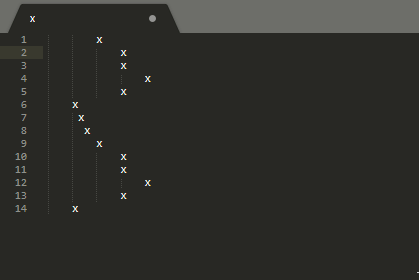Consider this text
x
x
x
x
x
x
x
x
x
x
x
x
x
x
and this command:
class FooCommand(sublime_plugin.TextCommand):
def run(self, edit, block=False):
view = self.view
pt = view.sel()[0].a
view.sel().clear()
view.sel().add(view.indented_region(pt))
and then just play around with it:

My question, does anyone know what’s the logic behind this simple command? It should be something really easy but I don’t understand it… 



 … thanks to point out! Tomorrow I’ll definitely give it a shot to your package to see what other pearls of wisdom may offer
… thanks to point out! Tomorrow I’ll definitely give it a shot to your package to see what other pearls of wisdom may offer 